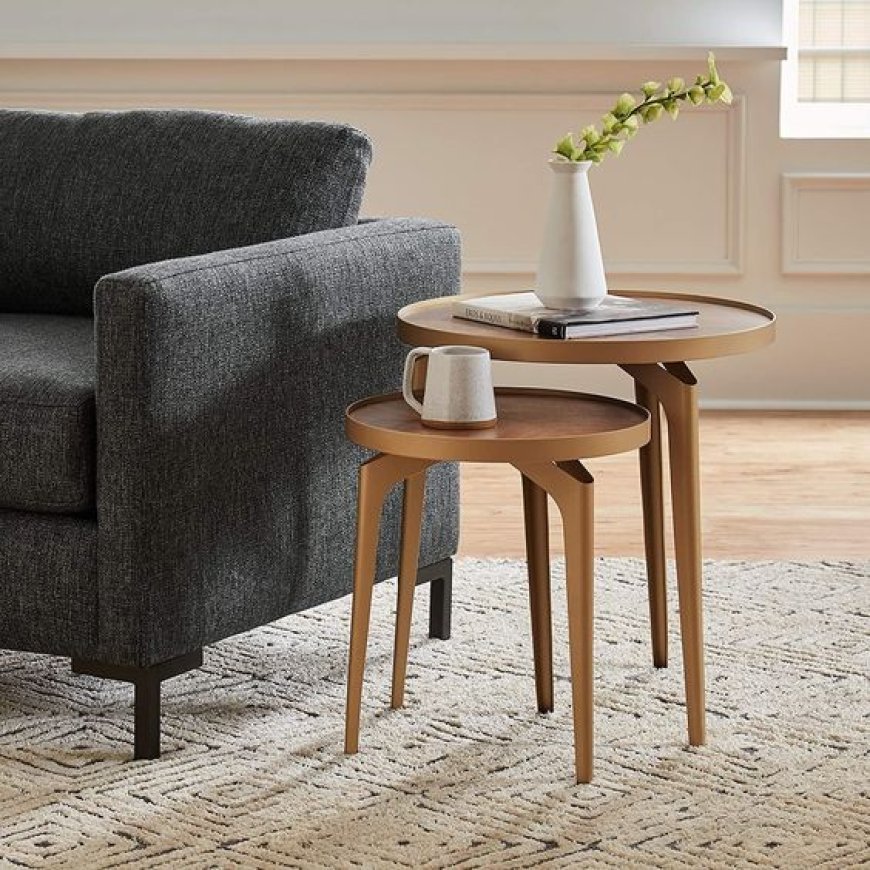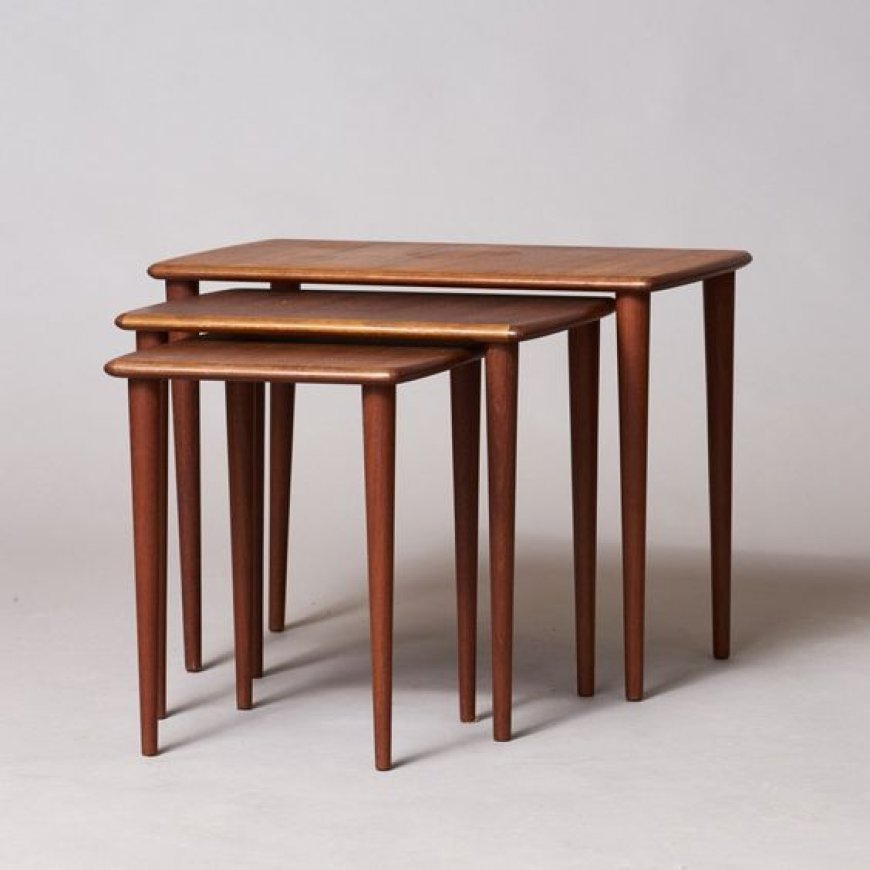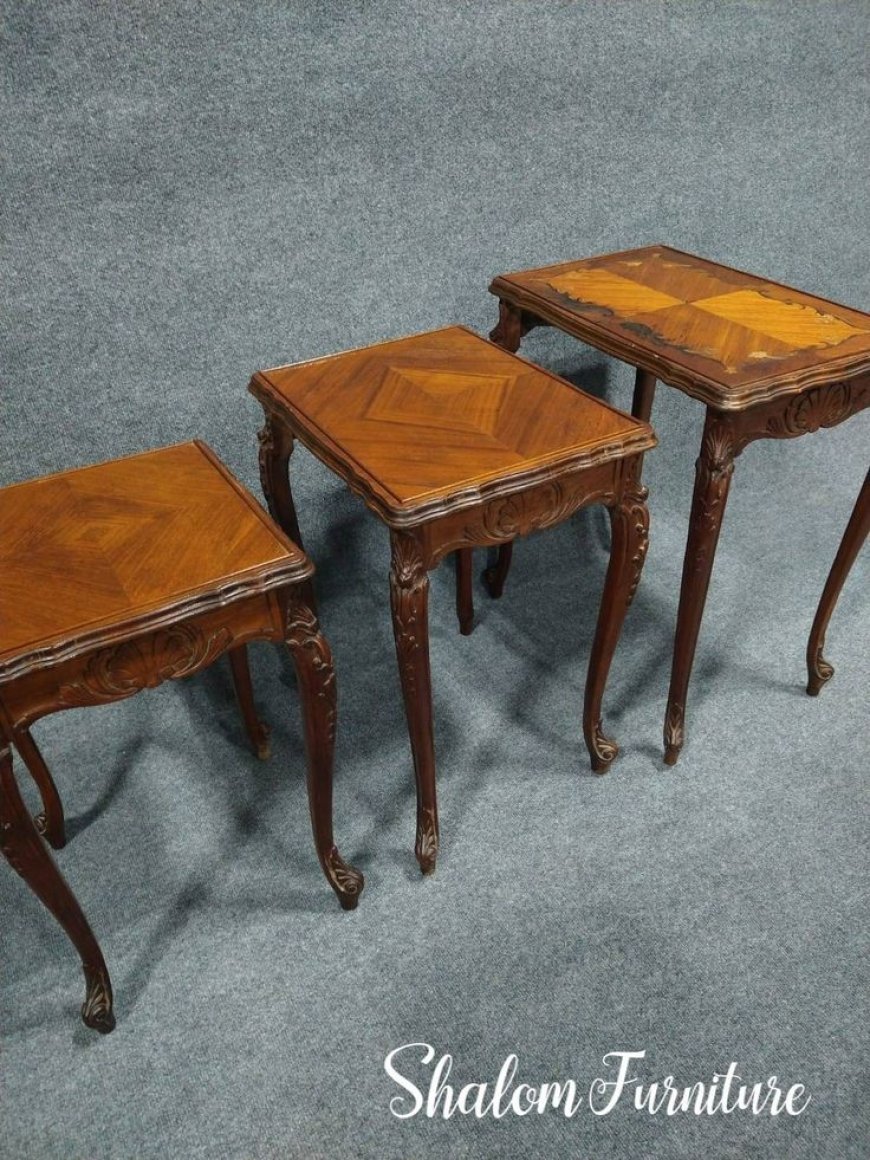Nest of Tables: Uncovering the Fascinating History and Evolution of this Versatile Furniture
Delve into the captivating history and origins of nest of tables, from their ancient roots to their modern-day adaptations. Explore their cultural significance, intricate designs, and practicality, and discover how these versatile furniture pieces have become a staple in contemporary homes.

Exploring the Origins and Evolution of Nest of Tables
Nest of tables, also known as nesting tables or stackable tables, have long been a staple in homes worldwide. These versatile furniture pieces provide functionality and add aesthetic appeal to any space. Let's journey back in time and uncover the captivating history and origins of a nest of tables.
A Brief Overview of Nest of Tables
Nest of tables refers to a set of tables of varying sizes that can be conveniently stacked or nested within one another. Typically, they are designed with the largest table at the bottom and progressively smaller tables placed on top. This compact nesting feature allows for easy storage and efficient use of space.
Ancient Beginnings: Early Forms of Nested Tables

The concept of nesting tables can be traced back to ancient civilizations. Ancient Egyptians and Romans had variations of nesting tables, primarily used for serving food and beverages. These early designs were often made of wood or stone, reflecting the craftsmanship of the time.
Nesting tables were also prevalent in Asia, particularly in China and Japan. These tables were intricately designed and served as a symbol of status and wealth. They were adorned with beautiful carvings and lacquered finishes and sometimes incorporated precious materials like jade or mother-of-pearl.
Renaissance Revival: Nesting Tables in Europe

During the Renaissance period in Europe, interest in ancient design forms was revived. Nesting tables gained popularity as decorative elements in elite households and salons. Craftsmen of this era began experimenting with different materials, such as walnut, oak, and mahogany, to create intricate designs.
The Golden Age of Nest of Tables: Victorian Era

The Victorian era marked the golden age of the nest of tables. With the rise of industrialization and mass production, these furniture pieces became more accessible to the middle class. Victorian-style nesting tables were often ornately decorated, featuring elaborate carvings, inlays, and embellishments. They were considered a symbol of refinement and were commonly found in Victorian parlors.
Modern Adaptations: Nest of Tables in the 20th Century

In the 20th Century, the design world witnessed various artistic movements that influenced the evolution of the nest of tables. The Art Deco movement created streamlined, geometric designs, while the Mid-Century Modern era emphasized functionality and simplicity. Nesting tables became famous for their clean lines, sleek finishes, and innovative use of materials like glass and metal.
Contemporary Nest of Tables: Designs and Trends
Today, a nest of tables is available in a wide range of styles, and materials. It finishes suiting diverse tastes and interior design preferences. Contemporary designs often focus on versatility and adaptability. Some nesting tables feature adjustable heights, rotating tops, or hidden storage compartments. They seamlessly blend with modern interiors, offering both practicality and visual appeal.
Frequently Asked Questions (FAQs)
What are the advantages of a nest of tables?
Nest of tables provides flexibility in terms of space utilization, allowing you to expand or minimize your table surface as needed. They are also convenient for entertaining guests, as they can be easily separated for individual use.
Can a nest of tables be used in outdoor settings?
While most nests of tables are designed for indoor use, outdoor-friendly options are available. Look for tables made of weather-resistant materials such as teak or aluminum.
How do I choose the right size of a nest of tables for my space?
Consider the dimensions of your room and the intended purpose of the tables. Measure the available space and ensure the tables fit comfortably without obstructing traffic flow. Additionally, consider the proportions of your existing furniture and select a nest of tables that complement the overall aesthetic.
Are nest of tables easy to maintain and clean?
Maintenance requirements depend on the materials used. Wood tables may require periodic polishing or waxing, while glass or metal tables can be cleaned with a gentle glass cleaner or mild detergent.
Celebrating the Enduring Legacy of Nest of Tables
From their ancient origins to their modern-day adaptations, a nest of tables has truly stood the test of time. These versatile furniture pieces have evolved to reflect the changing design trends and functional needs of different eras. Whether it's the exquisite craftsmanship of the past or the contemporary innovations of today, the nest of tables continue to enhance our homes with their practicality and aesthetic appeal.









